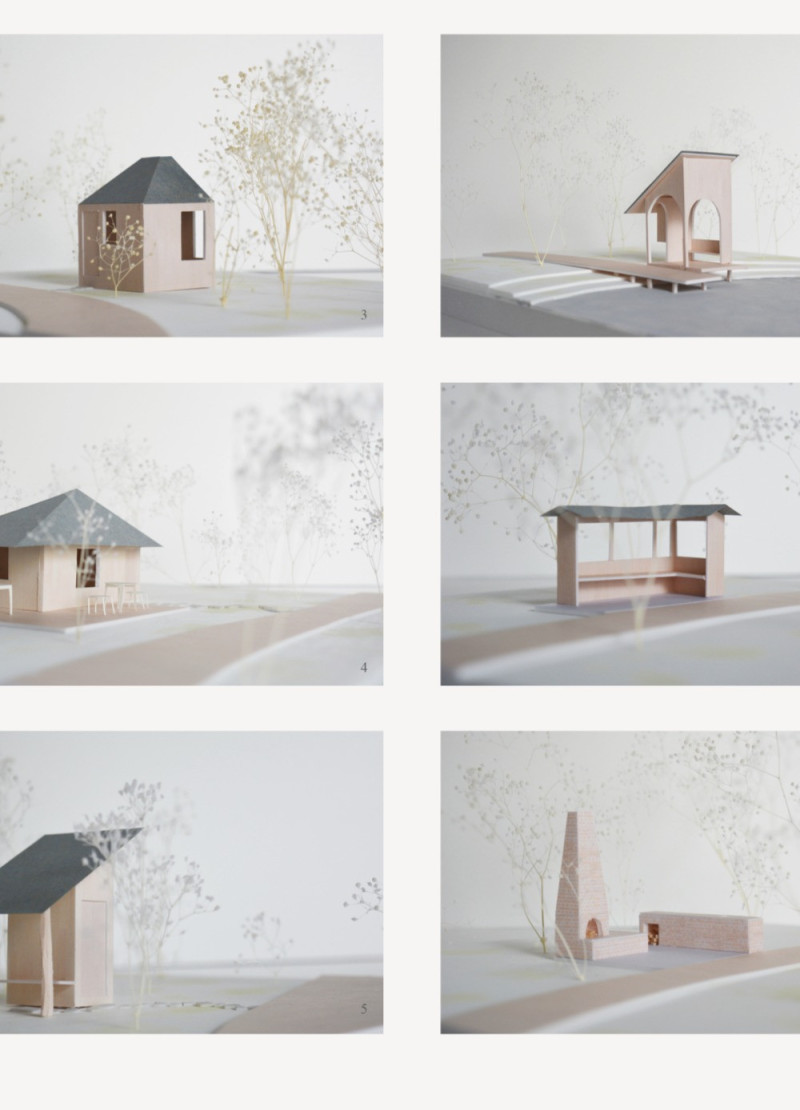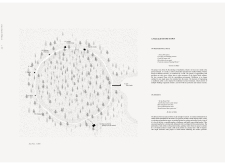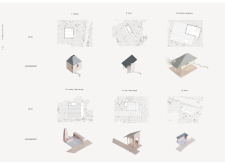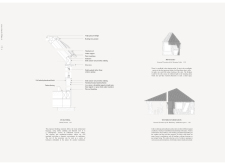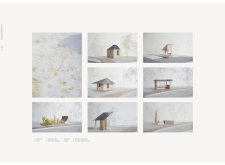5 key facts about this project
A Village of One's Own is an architectural endeavor set against a landscape that recalls traditional Latvian farmsteads. The design focuses on meditation, offering a retreat where individuals can reconnect with nature. This project comprises a series of small pavilions, each dedicated to specific functions, allowing visitors to experience tranquility in a thoughtfully arranged environment.
Conceptual Framework
The main idea of the design is to create spaces that encourage various forms of meditation and contemplation. The pavilions are arranged along a walking path, with dedicated areas for sleeping, workshops, outdoor cooking, and additional features like a jetty and garden. This layout helps foster an awareness of the surrounding environment, allowing visitors to move mindfully between different spaces.
Pavilion Layout
Each pavilion is positioned to enhance views and provide privacy. The overall arrangement resembles traditional farm layouts, creating a harmonious relationship between the buildings and the landscape. These smaller structures accommodate different activities while allowing for a natural flow between them. The layout emphasizes movement and exploration, making the path itself an important part of the experience.
Materiality
Materials selected for the project reflect local architectural practices, focusing on durability and comfort. Among the materials used are foil backed plasterboard, timber flooring, and thatched roofs. These choices not only respect the aesthetic traditions of the area but also improve energy efficiency, ensuring that the buildings are warm and inviting.
Design Integration
A key aspect of this design is the interaction between indoor and outdoor spaces. Visitors have the flexibility to choose where they would like to meditate or engage in activities. The mix of outdoor, semi-outdoor, and indoor areas encourages personal exploration and contemplation. Each pavilion acts as an extension of the landscape, contributing to a serene atmosphere that promotes reflection.
The buildings blend naturally into their surroundings, with thatched roofs echoing the nearby trees. Large rooflights flood the interiors with daylight, providing warmth and enhancing the calm ambiance throughout the day.


